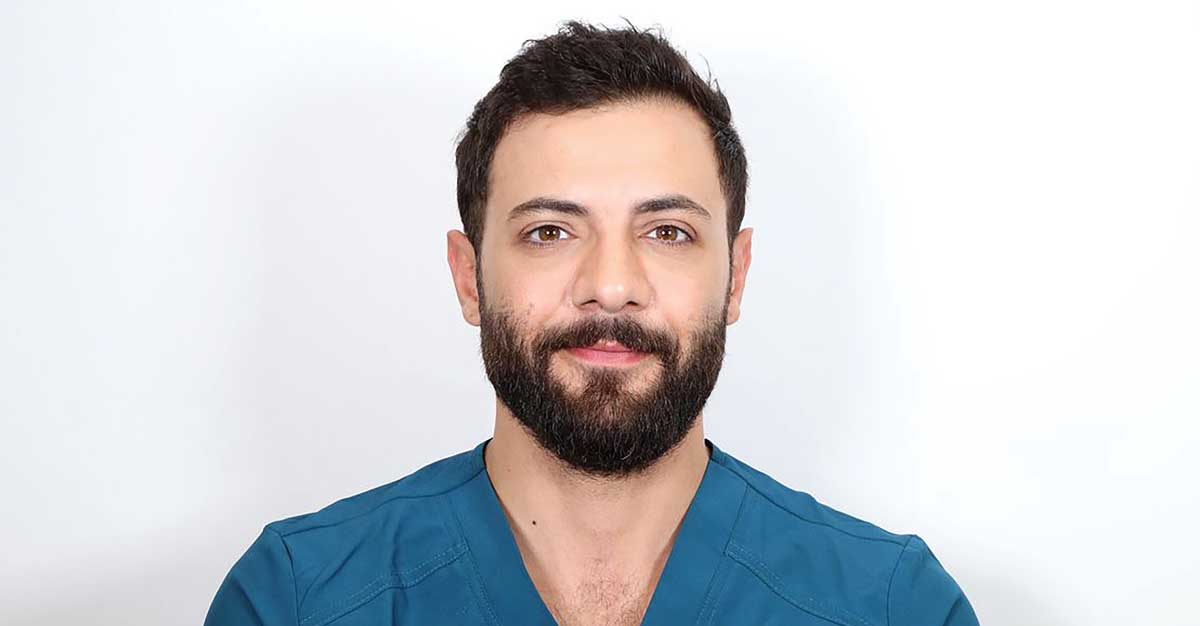21 Mar Dr. Omar Bou Hamdan
Revolutionizing Skincare: the Latest Innovations in Laser and Aesthetic Dermatology
The field of dermatology has seen groundbreaking advancements in laser treatments and energy-based technologies, offering patients more effective, non-invasive solutions for skin rejuvenation, pigmentation, and anti-aging. To explore these innovations, we sat down with Dr. Omar Bou Hamdan, an expert in general, cosmetic, and laser dermatology, to discuss the latest trends, treatment options, and the future of laser medicine.
The Power of Energy-Based Devices in Dermatology
Not all advanced skin treatments rely solely on lasers. Energy-based devices such as radiofrequency and ultrasound technologies have transformed the way dermatologists treat various skin concerns. Radiofrequency targets the dermis for skin tightening, while ultrasound based treatments reach deeper layers of the skin to give a lifting effect. Fractional and ablative lasers, on the other hand, focus on resurfacing the skin, treating scars, and reducing pigmentation,” explains Dr. Bou Hamdan.
Each technology plays a unique role, allowing dermatologists to tailor treatments based on a patient’s skin type, concerns, and aesthetic goals.
Morpheus8 and the Rise of Microneedling with Radiofrequency
One of the most talked-about treatments in aesthetics today is Morpheus8, a microneedling radiofrequency device that has gained global recognition.
“Morpheus8’s popularity stems from its ability to stimulate collagen production while tightening and improving skin texture. It’s a great option, but not the only one, other treatments may deliver equal or even better results depending on the patient’s needs,” says Dr. Bou Hamdan.
The key to successful treatment is customization, choosing the right technology for each individual’s skin type and concerns.
Laser Treatments for Skin Rejuvenation & Pigmentation
For those looking to enhance skin glow, texture, and overall quality, laser treatments offer powerful solutions. Best options for radiant skin:
• IPL (Intense Pulsed Light): Reduces redness and pigmentation
• Fractional Lasers: Stimulate collagen, treat fine lines, wrinkles, and scars
• CO2 Lasers: Deep resurfacing for dramatic skin renewal (with longer recovery)
• Non-Ablative Lasers: Gradual improvement with minimal downtime
When it comes to treating hyperpigmentation, Q-switched lasers and PicoLasers are among the best choices for stubborn melasma and dark spots. However, Dr. Bou Hamdan emphasizes that post-laser care and sun protection are essential to maintaining results and preventing recurrence.
Tattoo Removal: Science & Patience
Tattoo removal remains a growing field in laser dermatology, yet many patients expect instant results.
“The laser breaks down ink particles, which are then cleared by the immune system over time. Black and dark blue tattoos respond best, while lighter colors like green and yellow are more challenging. It typically requires multiple sessions, spaced at least six weeks apart, to fully remove a tattoo,” he explains.
While the process requires commitment and patience, advancements in Pico and Q-switched laser technology have made tattoo removal safer and more effective than ever before.
Scar Treatments & Skin Resurfacing
Scars—whether from acne, surgery, or injuries—can be effectively treated with modern dermatological techniques.
Treatment options based on scar type:
• Keloid scars: Flattened with corticosteroid injections followed by laser therapy
• Red, vascular scars: Best treated with vascular lasers like PDL
• Indented scars: Respond well to fractional lasers, microneedling, and collagen stimulators
“For optimal results, we often combine laser therapy with exosomes or skin boosters to enhance healing and skin regeneration,” notes Dr. Bou Hamdan.
Laser Hair Removal: Alexandrite vs. Diode
Laser hair removal has evolved significantly, with faster, more effective treatments suited for various skin types.
• Alexandrite Laser: Ideal for fair to medium skin tones, offering high precision and speed
• Diode Laser: Works for a broader range of skin tones, with deeper penetration for long-term effectiveness
With newer-generation lasers, pain is reduced, sessions are quicker, and results last longer, making permanent hair removal more accessible than ever.
The Future of Laser Medicine: AI & Skin Regeneration
What’s next for laser dermatology? According to Dr. Bou Hamdan, AI-powered laser systems are set to transform personalized treatments.
“AI-driven laser technology will allow real-time skin analysis to determine the ideal treatment parameters for each patient,” he predicts. Other emerging innovations include:
• Micro-skin removal techniques for enhanced skin tightening
• Non-invasive fat reduction lasers for body contouring
• Advanced laser combinations to treat multiple concerns in a single session
With continuous research and technological advancements, the future of dermatology is more precise, effective, and minimally invasive than ever before.
Aging Gracefully: The Ultimate Skincare Advice
When asked for his top anti-aging advice, Dr. Bou Hamdan stresses the importance of preventative skincare and a healthy lifestyle. “Instead of waiting for aging signs to appear, it’s crucial to start early with daily sunscreen, hydration, and antioxidants. Your diet, sleep, and overall wellness also play a major role in skin health,” he advises.
And when it comes to cosmetic procedures?
“The goal is not to fight aging but to age well. Treatments like lasers, injectables, and skin boosters can enhance natural beauty, but they should always support a fresh, youthful, and authentic look.”
Final Thoughts
The world of laser dermatology is evolving at an unprecedented pace, offering a variety of non-invasive solutions for skin rejuvenation, pigmentation, scar treatment, and anti-aging. Through cutting-edge laser technologies, AI-driven innovations, and a holistic approach to skincare, Dr. Omar Bou Hamdan continues to push the boundaries of aesthetic medicine, helping patients achieve healthier, more radiant skin while embracing the beauty of aging gracefully.





